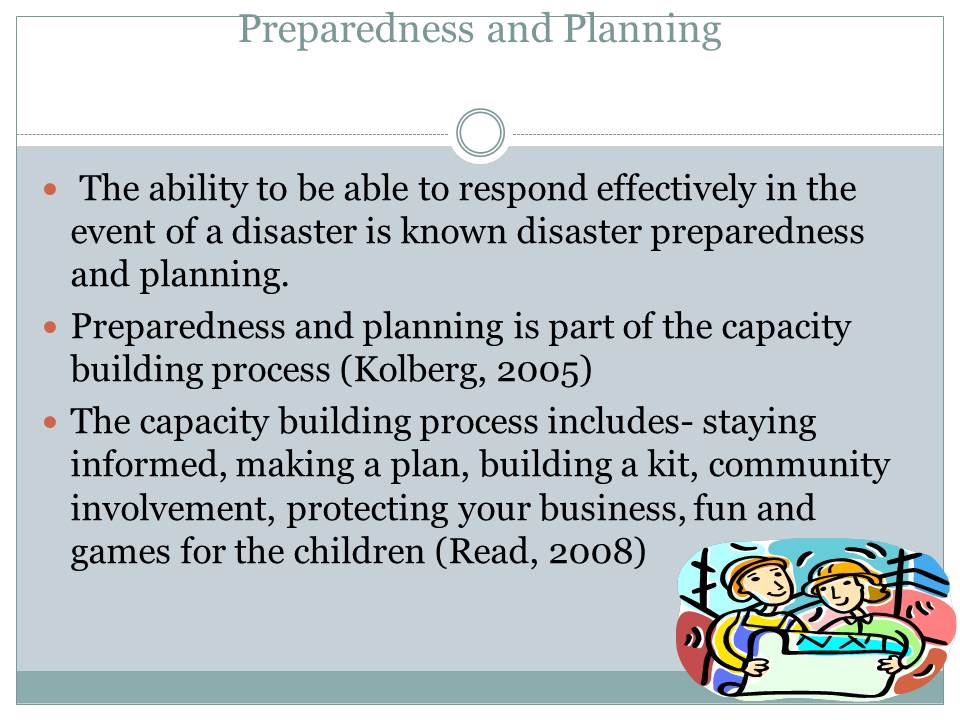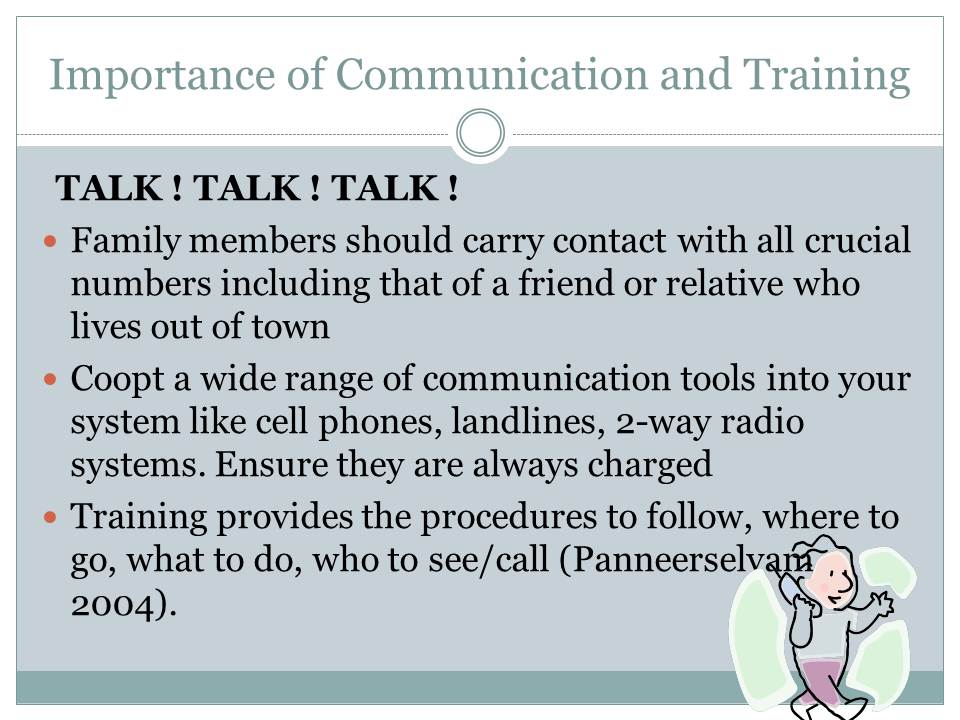Introduction
- Disasters cause untold destruction of property;
- Most critically they cause huge losses of life;
- For survivors, they live with permanent scars, both emotional and physical;
- Highly vulnerable groups of people like the disabled and elderly face higher risks;
- It is important to have a disaster preparedness program for your family. This will reduce the impact on your family’s lives and ensure faster recovery from the effects (Schaefer-Jones, 2007).

Preparedness and Planning
The ability to be able to respond effectively in the event of a disaster is known disaster preparedness and planning.
Preparedness and planning is part of the capacity building process (Kolberg, 2005).
The capacity building process includes- staying informed, making a plan, building a kit, community involvement, protecting your business, fun and games for the children (Read, 2008).

Importance of Communication and Training
Talk! Talk! Talk!
Family members should carry contact with all crucial numbers including that of a friend or relative who lives out of town.
Coopt a wide range of communication tools into your system like cell phones, landlines, 2-way radio systems. Ensure they are always charged.
Training provides the procedures to follow, where to go, what to do, who to see/call (Panneerselvam, 2004).

References
Kolberg J., (2005) Organize for disaster: Prepare your home and your family for any natural or unnatural disaster. New York: Squall Press Inc.
Panneerselvam R., (2004) Research methodology. New York: PHI Learning Pvt. Ltd.
Read T., (2008) Family emergency preparedness plan. New York: Cedar Fort.
Schaefer-Jones J., (2007) Preparing for the worst: A comprehensive guide to protecting your family from terrorist attacks, natural disasters, and other catastrophes. New York: Greenwood Publishing Group.